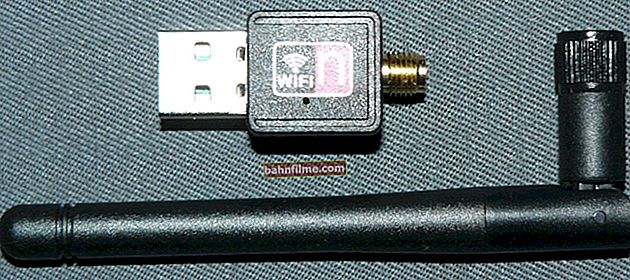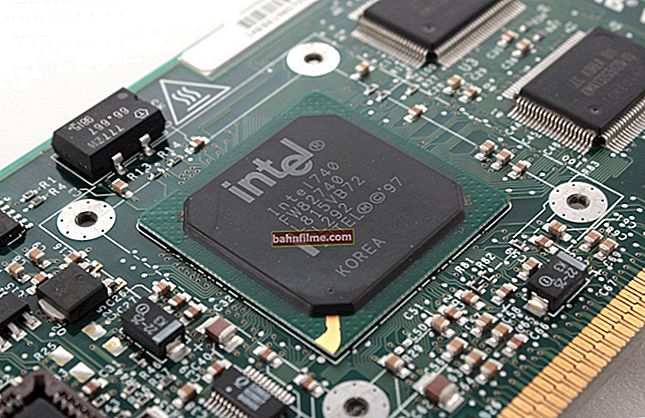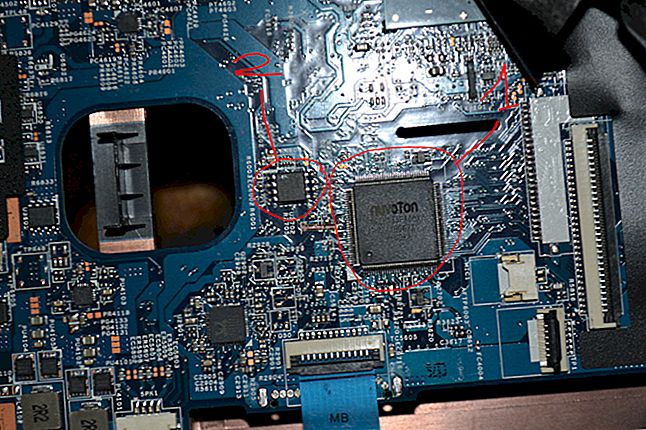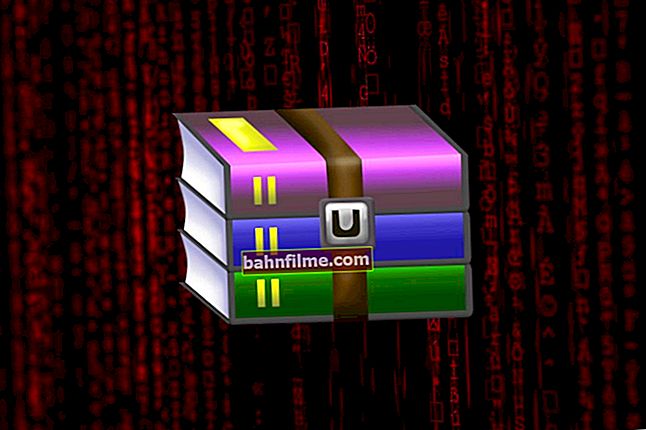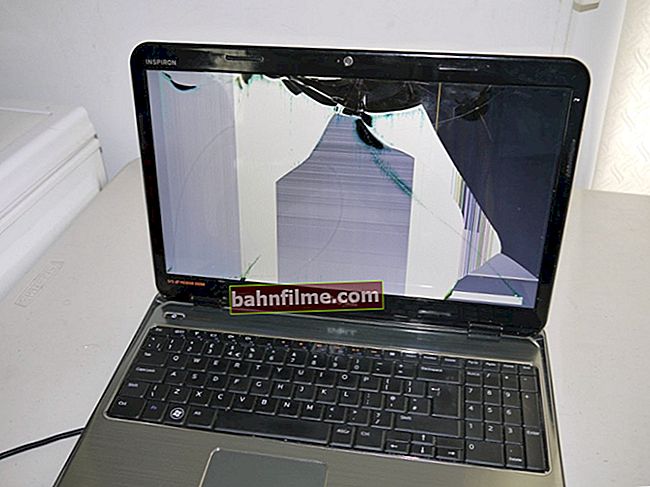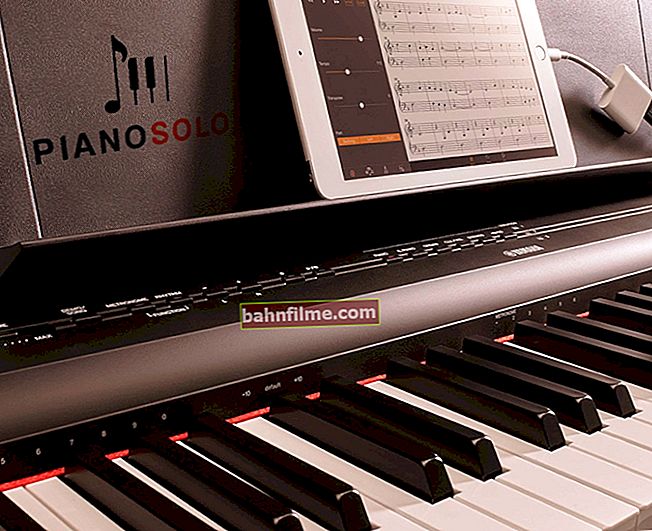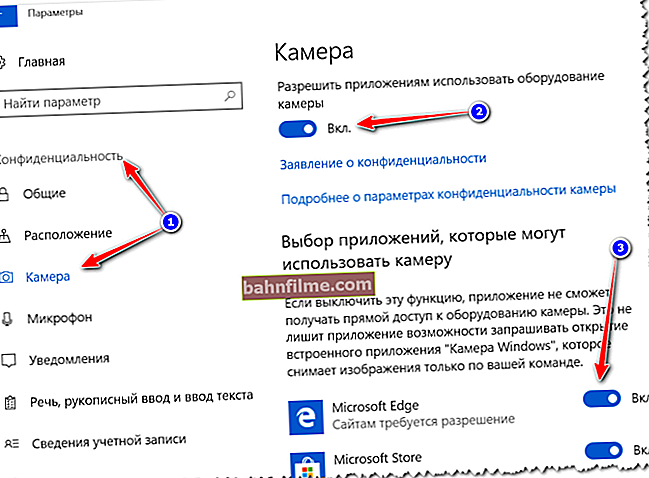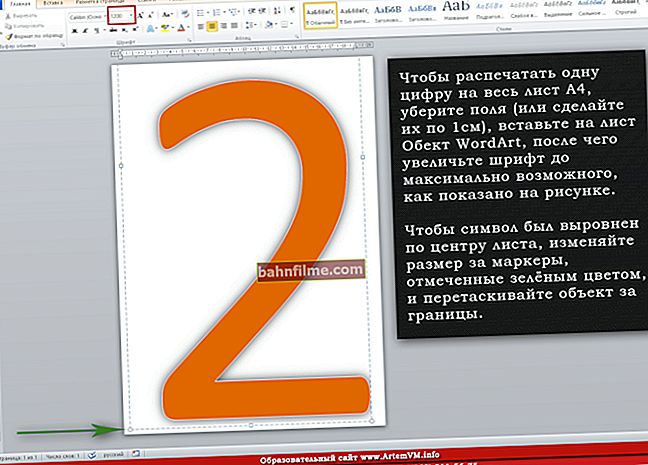
Typical question from a user
Good day.
Many masters recommend buying an SSD drive for faster PC operation (they even say the computer will turn on in 7-8 seconds). Will the speed of work really increase so much? I looked at sites with SSD disks, their read and write speed is indicated on them: for example, 535/545 MB / s and the SATA 6Gbit / s connection interface.
And how can I find out the current speed of my HDD in order to roughly estimate how much the speed will increase, and in general, is there any sense from an SSD? Thank you in advance for your response.
Good day.
It is true that after installing an SSD, the responsiveness and boot speed of the computer (laptop) will increase. I will break your "big" question into small ones and answer each of them. I think it will be more convenient for perception (both for you and for other users).
And so, let's get started ...
To help!

If your disk slows down, it is 100% loaded, I recommend that you read this article: //ocomp.info/zhestkiy-disk-zagruzhen-na-100-protsentov.html
*
Questions about the speed of SSD, HDD
Question 1: what utilities and programs are needed to test the speed of HDD, SSD?
Answer:
Perhaps this is the first thing to start with. There are many such utilities, a wide choice. Personally, I recommend choosing a couple of utilities from the same manufacturer, we are talking about: CrystalDiskMark and CrystalDiskInfo. It is in them that I will show how, what and where to click further in the article.
---
CrystalDiskMark / CrystalDiskInfo
Website : //crystalmark.info/download/index-e.html

CrystalDiskMark
The utilities can be downloaded on one page. Allows you to test the speed of the disk, view the disk temperature, connection interface, SMART readings and much more. Supports both HDD drives and newfangled solid state SSDs. Works in all Windows versions: XP, Vista, 7, 8, 8.1, 10 (32 | 64 bits).
By the way, there are portable versions available that do not need installation (that is, you just need to start it and you can work). Also worth noting is the support of the Russian language. In general, they are irreplaceable utilities for working with disks.
Question 2: how to check disk speed in CrystalDiskMark?
Answer:
I skip downloading and installing the utility. Further it is necessary:
- close all programs that load the hard drive (torrents, download managers, graphic editors, etc.);
- in the settings window, select the number of write and read cycles (the optimal number is 5, and it is the default value in the utility at the first start, see the screenshot below);
- specify the file size for the test (the optimal number in 1GiB is also set in the utility);
- select a drive for the test (most often they look at the system drive "C: \", because the responsiveness of Windows depends on it);
- the final touch is to press the button ALL and wait for the results. Do not work with the PC during the test!

HDD test results
Conclusions:
- The Read column is the speed of reading from the disk;
- The Write column is the speed at which the disk is written;
- In most cases, they look and navigate by the line "SeqQ32T1" (the very first) - this is the sequential write / read speed. Those. the speed of the HDD disk in the screenshot above is approximately 100 MB \ s;
- By the way, for a modern SSD drive, the sequential read speed must be at least 500 MB \ s (provided that you are connected via SATA-3.0, a few words about this below);
- If your low speed is not justified (for example, after purchasing an SSD - it remains "by eye" the same as with an HDD) - check the operating mode of the SATA drive (see question 3 below).
Question 3: how to determine the operating mode of a SATA hard drive? Connection interface ...
Answer:
To get detailed information about your drive and its operating mode, just run the CrystalDiskInfo utility (I recommended it at the beginning of the article).
As for the SATA operating mode - just look at the line "Transfer mode". I will decipher a couple of points:
- SATA / 600 | SATA / 600: left - current mode, right - supported;
- SATA / 600 - this means the drive operates in SATA 3.0 mode, max. theor. speed 600 MB / s (note: SATA 6Gbit / s - this is usually written on disks);
- SATA / 300 - this means the disk operates in SATA 2.0 mode, max. speed 300 MB / s (SATA 3Gbit / s);
- Example: if you connect an SSD drive to an old PC with SATA 2.0 support, in the "Transfer Mode" line you will see "SATA / 300 | SATA / 600" - i.e. the current mode is 300MB / s, but the drive could potentially run at 600MB / s (if connected to another PC).

Transmission mode
Question 4: what's the difference in speed between SSD and HDD?
Answer:
It depends on which computer ... If you have an old PC that does not support SATA 3.0, then you will not be able to get the maximum performance from an SSD drive ...
In general, on average, the sequential read / write speed of an SSD is 5 times higher than that of an HDD (see the screenshot below, about other indicators, you can keep silent ☺). I think this screenshot is enough to roughly estimate: for example, if your PC used to boot in 60 seconds before. - then after installing the SSD: it will become approximately in 12-15 seconds ...

SSD VS HDD - the difference in speed
Question 5: Is it true that SSD drives don't "live" for a long time?
Answer:
In my opinion, rumors that SSDs fail quickly and do not last long are a kind of "myth". The fact is that an SSD drive has a certain number of write-rewrite cycles. When they are exhausted, nothing more can be written to the disk (only read). If you specifically run the "cleverly invented" utilities for "forcing" the disk (permanent recording), then it is quite possible to quickly disable it.
Otherwise, it is not. For example, the screenshot below shows the official data from the SSD manufacturer Kingston. For a 240 GB disk, you can record about 80 TB (which is about 80,000 GB!).

Bytes Written, Kingston SSD A-400 Series
In turn, through simple calculations, you can get that when recording 20 GB per day (for example, a couple of games, movies) - the disc will last about 10 years! In 10 years, most likely, your computer (laptop) on which you work will be a rarity, and possibly SSD disks will already be replaced by even newer devices. A very decent term of work, in my humble opinion.
| Description | Value | Value-2 | Value-3 |
|---|---|---|---|
| Drive capacity, in GB | 240 | 240 | 120 |
| How much can you write down (to failure, from the manufacturer's website), in GB | 80000 | 80000 | 40000 |
| How much is recorded per day, in GB | 20 | 30 | 9 |
| How many days will the disk last | 4000 | 2666,6 | 4444,4 |
| How many years will the disc last? | 10,95 | 7,30 | 12,17 |
Therefore, my personal point of view is that an SSD drive will live no less than the same HDD (note: for an ordinary "average" user).
Question 6: Windows boot time will be 8 seconds, right?
Answer:
Yes and no. The fact is that it is difficult to say how much it will take to boot your Windows OS. this is influenced by many factors: what will be the real speed of the new SSD drive, how many and what programs do you have at startup, the version of Windows, is it optimized, etc.
By the way, regarding Windows optimization, I recommend that you read this article: //ocomp.info/super-optimizatsiya-windows-10.html
Here is one example in the photo below: after installing the SSD, the system (Windows 7) began to boot in 15 seconds, instead of 49. In my opinion, a very good acceleration.

Windows boot difference
Also a very revealing example: while one WOW player is waiting for the game to load, another has already started playing and is flying a griffin ...

SSD VS HDD - on the example of the game WOW
Question 7: Should you upgrade to an SSD? Its main advantages ...
Answer:
Perhaps, here everyone decides for himself. In my opinion, if there are funds, then, of course, it is (at least for the system disk with Windows). I will give the main advantages, and I will comment on them, and then decide for yourself. ☺
- Silence. Many hard drives crack during operation, which is very annoying (especially at night). SSD drive is silent a priori!
- Higher speed of work (this is the whole article, I no longer comment);
- Low weight: especially important for laptops that need to be carried with you;
- Lower power consumption: also relevant for laptops, the battery will last 10-15% longer on average after replacing the HDD with an SSD;
- Not so much afraid of shaking and vibration;
- Not subject to overheating;
- No need to defragment.
Question 8: Now SSD M2 drives have started to appear (which are several times faster than SATA drives). Should I switch to them?
Answer:
Firstly, SSD M2 drives can be different: both SATA and PCI-E (SATA variant works exactly at the same speed as classic SSDs).If we talk about modern SSD M2 (NVMe), then yes, in synthetic tests they show 5 times more performance than SSD (SATA III). The test screen is given below.

SSD (NVMe, SATA), HDD speed test | Clickable (Crystal DiskMark - test utility)
To help!
SSD M2 - how to choose a drive (subtleties with SATA and PCI-E, 2242, 2260, 2280, and keys) - //ocomp.info/ssd-m2-kak-vyibrat-nakopitel.html
However, in practice (in real problems) the difference in speed is not so obvious. For example, various documents Word, Excel, etc. "trifle" will open on an SSD (NVMe) just as instantly as on a SATA SSD. When loading Windows - you can win 3-5 seconds, some game levels will load faster (for example, WOW on the screenshot below: 15 seconds versus 13 seconds; but this is not so important (in my opinion)).

Game loading speed - 15 sec. against 13 sec. (SSD M2 NVMe and SSD SATA)
In general, to summarize: after switching from HDD to SSD (SATA), you will notice a significant acceleration of your computer; after switching from SSD (SATA) to SSD M2 (NVMe) - the acceleration is far from so obvious (and noticeable only when performing certain tasks).
*
👉 Given below a small video that clearly shows how fast the same computer behaves, to which different SSDs vs HDDs are connected (2.5 times difference!).
*
On this note, I conclude the article.
Good luck to all!
✌
